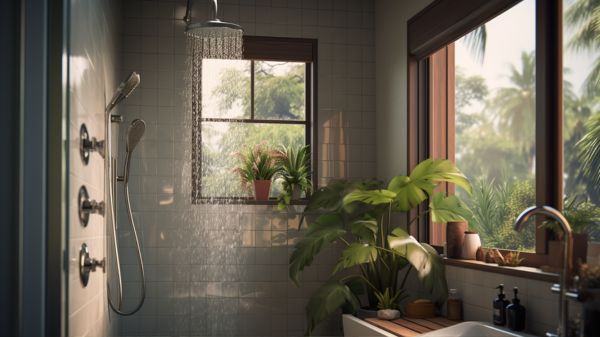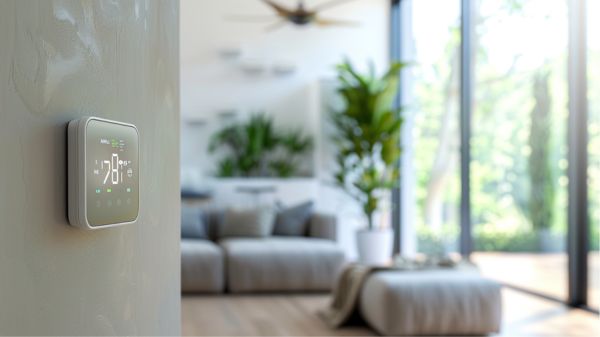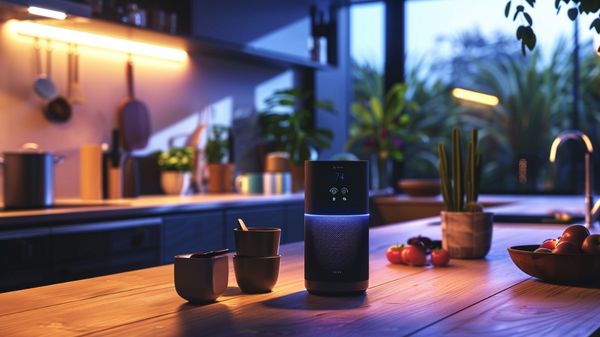Want to save both energy and water? Look no further! We’ve got 10 smart tips to help you conserve water and reduce energy consumption.
From installing low-flow showerheads to fixing leaky faucets, these practical solutions will not only save you money but also contribute to a more sustainable future.
So, join the movement and make a positive impact on the environment by implementing these energy-saving techniques. Let’s get started on your journey to water conservation!
Install Low-Flow Showerheads
To maximize water conservation in your home, replace your current showerheads with low-flow options. Water saving showerheads are designed to reduce water consumption without compromising your shower experience. These innovative fixtures work by limiting the flow rate of water, thus conserving water and saving you money on your water bill.
With a low-flow showerhead, you can enjoy a satisfying shower while reducing your environmental impact. These showerheads typically use around 1.5 to 2 gallons of water per minute, compared to standard showerheads that use 2.5 gallons per minute or more.
Fix Leaky Faucets
Got a leaky faucet? Don’t ignore it. Not only is a leak wasting water, but it can also lead to higher water bills. In this section, we’ll discuss the consequences of wasting water and provide tips on how to detect and fix leaks in your faucets.
Wasting Water: Consequences
Fixing leaky faucets is an essential step in preventing water wastage and conserving energy. The consequences of excessive water usage are far-reaching, with water scarcity issues becoming increasingly prevalent. By allowing even a small leak to persist, you not only waste water but also contribute to the depletion of this precious resource.
Moreover, wasting water has a negative impact on the environment, as it requires energy to treat and transport water to your home. Additionally, leaky faucets can lead to higher water bills, putting unnecessary strain on your finances.
How to Detect Leaks?
If you notice a leaky faucet in your home, it’s important to quickly address the issue in order to conserve water and save energy. Here are some leak detection methods and water leak prevention tips to help you tackle the problem:
- Visual Inspection: Check for any visible signs of leaks, such as dripping or pooling water around the faucet.
- Listening Test: Listen for any hissing or whistling sounds near the faucet, as this could indicate a leak.
- Water Meter Check: Turn off all water sources in your home and monitor the water meter. If it continues to move, you may have a leak.
- Food Coloring Test: Add a few drops of food coloring to the toilet tank. If the color appears in the bowl without flushing, there may be a leak.
- Professional Help: If you’re unable to detect or fix the leak yourself, consider contacting a plumbing professional for assistance.
Use a Water-Saving Toilet
To conserve water, make sure you’re using a water-saving toilet. Water-saving toilets have numerous benefits, both for the environment and your wallet. These toilets use less water per flush, reducing your water consumption and lowering your water bills.
The installation process for a water-saving toilet is relatively straightforward. You can either replace your existing toilet with a new water-saving model or retrofit your current toilet with a water-saving device. Retrofitting involves adding a device, such as a dual-flush converter or a toilet tank bank, to your toilet to reduce the amount of water used per flush.
If you opt for a new water-saving toilet, there are various models available, including low-flow toilets and dual-flush toilets, which allow you to choose between a full flush and a half flush.
Opt for Water-Efficient Appliances
When it comes to conserving water, opting for water-efficient appliances is a smart choice. These appliances are designed to minimize water usage without compromising on performance.
Efficient Appliance Options
Consider purchasing water-efficient appliances to maximize your energy savings and reduce water consumption. Here are some efficient appliance options that can help you achieve these goals:
- Energy Star-rated washing machines: These machines use less water and energy while still delivering excellent cleaning performance. Look for models with advanced features like load sensors and variable water levels.
- Dishwashers with soil sensors: These sensors detect the level of dirtiness on your dishes and adjust the water usage accordingly. This ensures that you only use the necessary amount of water for each load.
- Low-flow showerheads: These showerheads reduce water usage by limiting the flow rate without compromising on water pressure. You can enjoy a refreshing shower while conserving water.
- Dual-flush toilets: These toilets have two flushing options – one for liquid waste and another for solid waste. This allows you to use less water when appropriate.
- Smart irrigation systems: These systems use weather data and soil moisture sensors to optimize watering schedules. They prevent overwatering and save water in your garden or lawn.
Water-Saving Appliance Benefits
Investing in water-efficient appliances has several benefits that can help you conserve water and save energy.
Opting for a water-saving dishwasher can significantly reduce water consumption. These appliances use less water compared to traditional models, which means you can clean your dishes without wasting excessive amounts of water. Not only does this save you money on your water bill, but it also helps to conserve a precious resource.
Similarly, water-efficient washing machines offer numerous benefits. These appliances use less water per load, allowing you to save both water and energy. By choosing a water-efficient washing machine, you can reduce your environmental impact while still maintaining the cleanliness of your clothes.
Investing in these appliances is a practical and effective way to save water and contribute to a more sustainable future.
Impact of Water Efficiency
To maximize your water efficiency, regularly choose water-efficient appliances that consume less water and save energy. Opting for water-efficient appliances can have a significant impact on both your water conservation efforts and your utility bills. Here are some key benefits of water efficiency:
- Reduced water consumption: Water-efficient appliances use less water per cycle, helping to conserve this precious resource.
- Lower energy usage: By using less water, these appliances also require less energy to operate, resulting in cost savings and a reduced environmental footprint.
- Environmental preservation: Conserving water helps to protect ecosystems, maintain biodiversity, and support the overall health of our planet.
- Longer lifespan: Water-efficient appliances are often designed with advanced technology and materials, increasing their durability and lifespan.
- Increased property value: Outfitting your home with water-efficient appliances can enhance its value, as eco-friendly features are highly sought after in today’s market.
Collect and Reuse Rainwater
Start saving water today by collecting and reusing rainwater in your own backyard. Rainwater harvesting is a simple and effective way to conserve water and reduce your water bill. By collecting rainwater, you can use it for various purposes such as watering your plants, cleaning your car, or even flushing toilets.
To collect rainwater, set up a rain barrel or a rainwater tank in your yard. Position it under a downspout to catch the water when it rains. Make sure the barrel has a lid to keep out debris and mosquitoes.
When you need water, simply use a hose or tap to access the collected rainwater. This not only helps you save water but also reduces the strain on municipal water supplies. So, take the initiative and start collecting rainwater today to contribute to a more sustainable future.
Water Plants Efficiently
Watering your plants efficiently can greatly contribute to water conservation and reducing your water usage. Here are some watering tips and water conservation techniques to help you make the most of your water while keeping your plants healthy:
- Water in the early morning or late afternoon to minimize evaporation.
- Use a watering can or drip irrigation system to target water directly to the roots.
- Mulch around your plants to retain moisture and prevent weeds.
- Group plants with similar water needs together to avoid overwatering.
- Monitor soil moisture levels and only water when necessary, using the finger test or a moisture meter.
By following these watering tips and water conservation techniques, you can ensure that your plants receive the water they need while minimizing waste.
Insulate Hot Water Pipes
Insulate all of your hot water pipes to maximize energy efficiency and minimize heat loss.
Insulating your hot water pipes is a simple yet effective way to save energy and reduce your utility bills.
By adding energy efficient insulation to your hot water pipes, you can prevent heat from escaping and ensure that the water stays hot for longer periods of time.
This not only helps to conserve water, but also reduces the strain on your water heater, leading to lower maintenance costs.
By insulating your hot water pipes, you can create a more efficient and sustainable home, while also saving money in the long run.
Implement Timed Watering Systems
To efficiently conserve water outdoors, consider implementing timed watering systems. By setting up a watering schedule, you can ensure that your plants receive the necessary moisture without wasting excess water.
Smart irrigation technology can also help by automatically adjusting watering times based on weather conditions, further optimizing water usage.
With these systems in place, you can easily conserve water while maintaining a healthy and vibrant outdoor space.
Efficient Watering Schedules
You can easily optimize your water usage by implementing a timed watering system. Here are some efficient watering techniques that will help you conserve water and save money:
- Set specific watering schedules: Determine the best times to water your plants and set timers to automate the watering process.
- Adjust watering duration: Different plants require different amounts of water, so make sure to adjust the duration of watering accordingly.
- Consider weather conditions: Be mindful of the weather forecast and adjust your watering schedule accordingly. Avoid watering during rainy periods.
- Water deeply and less frequently: Instead of frequent shallow watering, water your plants deeply to encourage deep root growth and reduce water waste.
- Install smart irrigation systems: Use smart technology to monitor soil moisture levels and automatically adjust watering schedules based on plant needs.
Smart Irrigation Technology
Implement timed watering systems for efficient irrigation with smart technology. Smart irrigation technology offers numerous benefits for water conservation. By using sensors and weather data, these systems can automatically adjust watering schedules based on the specific needs of your landscape. This ensures that your plants receive the right amount of water, reducing waste and promoting healthy growth.
Additionally, smart irrigation technology can help you save money by optimizing water usage and reducing utility bills. These cost-effective solutions not only benefit the environment but also provide convenience and peace of mind.
With smart irrigation technology, you can have a beautiful and vibrant landscape while conserving water and contributing to a sustainable future. Start implementing these systems today and make a positive impact on both your wallet and the planet.
Conserving Water Outdoors
By utilizing timed watering systems, you can effectively conserve water outdoors while ensuring your landscape receives the necessary hydration.
Here are some practical tips to help you conserve water outdoors and create a beautiful, sustainable landscape:
- Install a rainwater harvesting system to collect and store rainwater for irrigation purposes. This reduces your dependence on municipal water sources.
- Choose drought-resistant landscaping options such as native plants, succulents, and grasses that require less water to thrive.
- Group plants with similar water requirements together, so you can water them efficiently without wasting water on plants that don’t need as much.
- Adjust your watering schedule based on weather conditions. Watering during cooler parts of the day, such as early morning or late evening, reduces evaporation.
- Regularly check and maintain your irrigation system to prevent leaks and ensure water is distributed evenly.
Upgrade to Energy-Efficient Dishwashers
Save water and energy by switching to energy-efficient dishwashers.
Upgrading to an energy-efficient dishwasher offers numerous benefits. These modern appliances are designed to use less water and electricity, helping you reduce your environmental impact and lower your utility bills.
Energy-efficient dishwashers use advanced technologies such as sensors and improved water jets to clean dishes effectively while using less water. On average, older dishwashers use around 6-10 gallons of water per cycle, while energy-efficient models can use as little as 3 gallons. This significant reduction in water usage not only saves water but also conserves energy used for heating the water.
Practice Smart Lawn Irrigation
To efficiently conserve water and energy, consider employing smart lawn irrigation techniques by partnering with reputable lawn irrigation companies near Tampa Bay (or in your local area). By implementing these practices, you can make a significant difference in water consumption and reduce your environmental impact. Here are some tips to help you practice smart lawn irrigation:
- Install a smart sprinkler system: These systems use weather data and sensors to adjust watering schedules based on the specific needs of your lawn, saving water and preventing overwatering.
- Use drought-resistant landscaping: Planting native and drought-resistant plants can reduce the need for excessive watering. These plants are adapted to thrive in your region’s climate, requiring less water to stay healthy.
- Adjust watering times: Water your lawn during the early morning or late evening when temperatures are cooler, reducing evaporation.
- Check for leaks: Regularly inspect your irrigation system for any leaks or broken sprinkler heads that could result in water wastage.
- Mulch your lawn: Applying a layer of organic mulch around your plants can help retain moisture in the soil, reducing the need for frequent watering.
Conclusion
Now that you have learned these 10 smart energy-saving tips for water conservation, it’s time to put them into action!
By implementing these simple changes in your daily routine, you can make a significant impact on the environment and save money on your water bill.
So why wait? Start making a difference today and watch as your efforts pay off in more ways than one.
Happy conserving!




